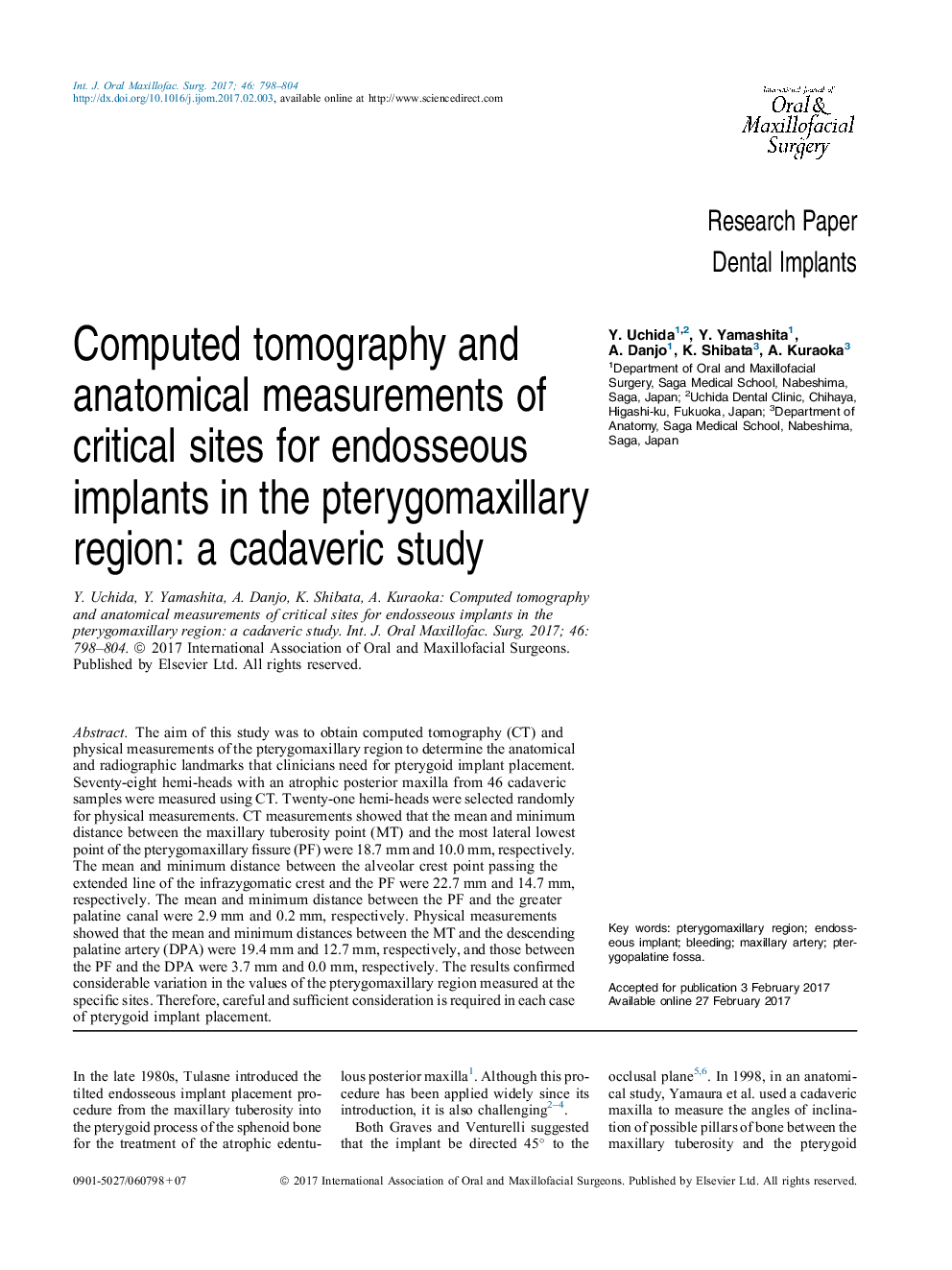| Article ID | Journal | Published Year | Pages | File Type |
|---|---|---|---|---|
| 5639193 | International Journal of Oral and Maxillofacial Surgery | 2017 | 7 Pages |
The aim of this study was to obtain computed tomography (CT) and physical measurements of the pterygomaxillary region to determine the anatomical and radiographic landmarks that clinicians need for pterygoid implant placement. Seventy-eight hemi-heads with an atrophic posterior maxilla from 46 cadaveric samples were measured using CT. Twenty-one hemi-heads were selected randomly for physical measurements. CT measurements showed that the mean and minimum distance between the maxillary tuberosity point (MT) and the most lateral lowest point of the pterygomaxillary fissure (PF) were 18.7Â mm and 10.0Â mm, respectively. The mean and minimum distance between the alveolar crest point passing the extended line of the infrazygomatic crest and the PF were 22.7Â mm and 14.7Â mm, respectively. The mean and minimum distance between the PF and the greater palatine canal were 2.9Â mm and 0.2Â mm, respectively. Physical measurements showed that the mean and minimum distances between the MT and the descending palatine artery (DPA) were 19.4Â mm and 12.7Â mm, respectively, and those between the PF and the DPA were 3.7Â mm and 0.0Â mm, respectively. The results confirmed considerable variation in the values of the pterygomaxillary region measured at the specific sites. Therefore, careful and sufficient consideration is required in each case of pterygoid implant placement.
